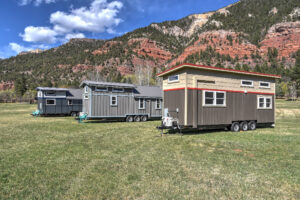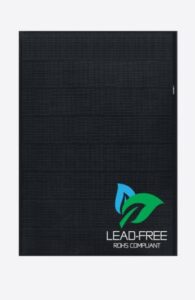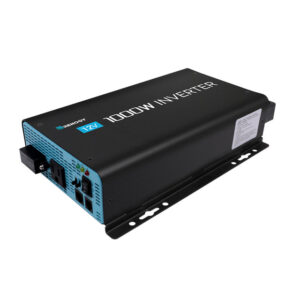
Key Takeaways: Inverter Selection for Tiny Solar Homes
-
Understanding the difference between micro-inverters and string inverters is crucial for tiny solar home setups.
-
Micro-inverters offer panel-level optimization, which can be beneficial for homes with shading issues or complex roof designs.
-
String inverters are cost-effective and simpler to install but may not perform as well in shaded areas or for roofs with multiple orientations.
-
Considering factors like roof space, budget, and energy needs is essential when choosing the best inverter for your tiny solar home.
-
Consulting with a solar energy advisor can provide personalized recommendations tailored to your specific situation.
Powering Tiny Homes: Finding Your Solar Inverter Match
When you’re outfitting your tiny home with solar power, the inverter you choose is as vital as the solar panels themselves. It’s the heart of your solar system, converting the sun’s energy into usable electricity. The question is, with limited space and unique energy needs, which inverter type is right for your tiny abode? Let’s delve into the specifics of micro-inverters and string inverters to illuminate your path to sustainable living.
What is a Solar Inverter and Why Does It Matter?
A solar inverter is a device that turns the direct current (DC) electricity generated by your solar panels into alternating current (AC) electricity—the kind that powers your lights, fridge, and phone charger. It’s not just about conversion; it’s about efficiency and making the most out of the solar energy you capture. Without an inverter, the energy harnessed by your solar panels would be unusable in your home.

Identifying Your Solar Needs: The First Step to Selection
Before diving into the world of inverters, it’s crucial to assess your solar needs. Consider your energy consumption, the size of your roof, potential shading from trees or buildings, and your budget. These factors will guide you in choosing an inverter that not only fits your tiny home but also your lifestyle.
Shining a Light on Micro-Inverters

How Do Micro-Inverters Work?
Micro-inverters are small, compact units attached directly to each solar panel. They convert DC to AC right at the source, which means each panel operates independently. This setup is particularly beneficial if your solar panels are partially shaded at different times of the day or if they face multiple directions.
Advantages of Micro-Inverters for Tiny Homes
Micro-inverters shine in scenarios where space and efficiency are paramount. Here’s why they could be the perfect fit for your tiny solar home:
-
Maximized Energy Production: Each solar panel has its own inverter, so even if one panel is shaded, the others keep performing at their best.
-
Enhanced Reliability: If one micro-inverter fails, the rest of your system keeps humming along, ensuring a continuous power supply.
-
Real-Time Monitoring: You can track the performance of each individual panel, which is great for detecting issues early and optimizing your system’s output.
Moreover, micro-inverters are a smart choice if you’re planning a DIY installation. Their plug-and-play nature makes them relatively straightforward to set up, even for those with a modest technical background.
Considerations When Choosing Micro-Inverters
While micro-inverters boast many benefits, they also come with considerations that should be weighed:
-
Cost: Micro-inverters are generally more expensive upfront than their string inverter counterparts.
-
Installation Time: Attaching an inverter to each panel takes more time, which could increase labor costs if you’re not installing them yourself.
-
Maintenance: If a micro-inverter fails, it may be more challenging to access and replace, especially if it’s mounted underneath a rooftop solar panel.
But don’t let these factors deter you. The long-term benefits, like increased energy yield and lower impact from shaded panels, often offset the initial investment in micro-inverters.

Understanding String Inverters and Their Function
Now, let’s talk about string inverters. These devices connect a ‘string’ of solar panels to a single inverter. The inverter then converts the combined DC power from the panels into AC power for your home. String inverters are widely used in home solar installations due to their cost-effectiveness and simplicity.
Potential Pitfalls of String Inverters in Small Installations
However, string inverters are not without their challenges, especially in tiny homes with limited roof space or partial shading. Since all panels in a string are connected, the weakest link—say, a shaded panel—can reduce the performance of the entire string. This could mean less efficiency and, ultimately, less electricity generated by your solar system.
Cost Comparison: String Inverters vs. Micro-Inverters
When it comes to cost, string inverters generally have a lower initial price tag than micro-inverters. This can make them an attractive option for those on a tight budget. But remember, the long-term efficiency losses from shading or roof orientation issues could potentially offset these upfront savings.
Micro vs. String: The Solar Showdown
Choosing between micro-inverters and string inverters isn’t just about the numbers; it’s about what’s best for your specific situation. Let’s pit them against each other in key areas to help you make an informed decision.

Efficiency on a Small Scale: Which Inverter Wins?
When it comes to efficiency, micro-inverters generally take the lead, particularly in complex installations. Their panel-level conversion means that each panel operates at its maximum potential, regardless of the performance of its neighbors. This is a significant advantage over string inverters, which can be dragged down by a single underperforming panel.

Installation and Upkeep: Ease for End Users
For installation, string inverters are often seen as less complex, requiring less equipment and potentially less time to install. However, micro-inverters offer a more modular approach, which can be advantageous for those looking to install their system in stages or do it themselves.
-
String inverters may require less time to install, which can mean lower labor costs if you’re hiring a professional.
-
Micro-inverters can be added one at a time, offering flexibility for system expansion or phased installation.
Maintenance considerations differ too. With string inverters, you’ll typically have one or two central points of potential failure, which can be easier to service. Micro-inverters, on the other hand, require servicing at the panel level, which could mean more complex maintenance over the life of your system.
Scalability and Future Additions: Planning Ahead with Inverters
As you plan for the future, consider how your solar system might grow with your needs. Micro-inverters offer outstanding scalability. You can easily add more panels—and more micro-inverters—without worrying about the capacity of a central inverter. With string inverters, adding more panels might mean upgrading to a larger inverter or adding an additional one, which can be more cumbersome and costly.
Empowering Your Choice: Making an Informed Decision
Can I Install a Micro-Inverter by Myself?
While micro-inverters are generally more user-friendly than string inverters, it’s essential to have a good understanding of electrical systems before attempting to install any solar components. For safety and warranty reasons, it is often best to have a certified professional carry out the installation.
How Long Do Solar Inverters Typically Last?
Solar inverters are built to last. Typically, string inverters have a lifespan of about 10-15 years, while micro-inverters can last up to 25 years. Keep in mind that warranties vary, and regular maintenance can extend the life of your inverter.
What Happens If Part of My Solar Array is Shaded?
If part of your solar array is shaded, micro-inverters will minimize the impact since each panel operates independently. With string inverters, the shaded panel can decrease the performance of the entire string, reducing overall energy production.
Are Micro-Inverters Safer than String Inverters?
Micro-inverters are considered safer because they convert DC to AC at each panel, reducing the voltage running through your system. String inverters, by contrast, handle high DC voltage which can be more hazardous if not properly managed.
Should I Upgrade My Existing String Inverter to Micro-Inverters?
Upgrading to micro-inverters might be beneficial if you’re experiencing shading issues or if you plan to expand your solar array. However, it’s important to consider the costs involved and whether the potential gains in energy production justify the investment.
Choosing the right inverter is a significant step towards energy independence for tiny home dwellers. Whether you opt for micro-inverters or string inverters, the goal is to ensure a reliable and efficient solar energy system that meets your living needs and supports your sustainable lifestyle.



